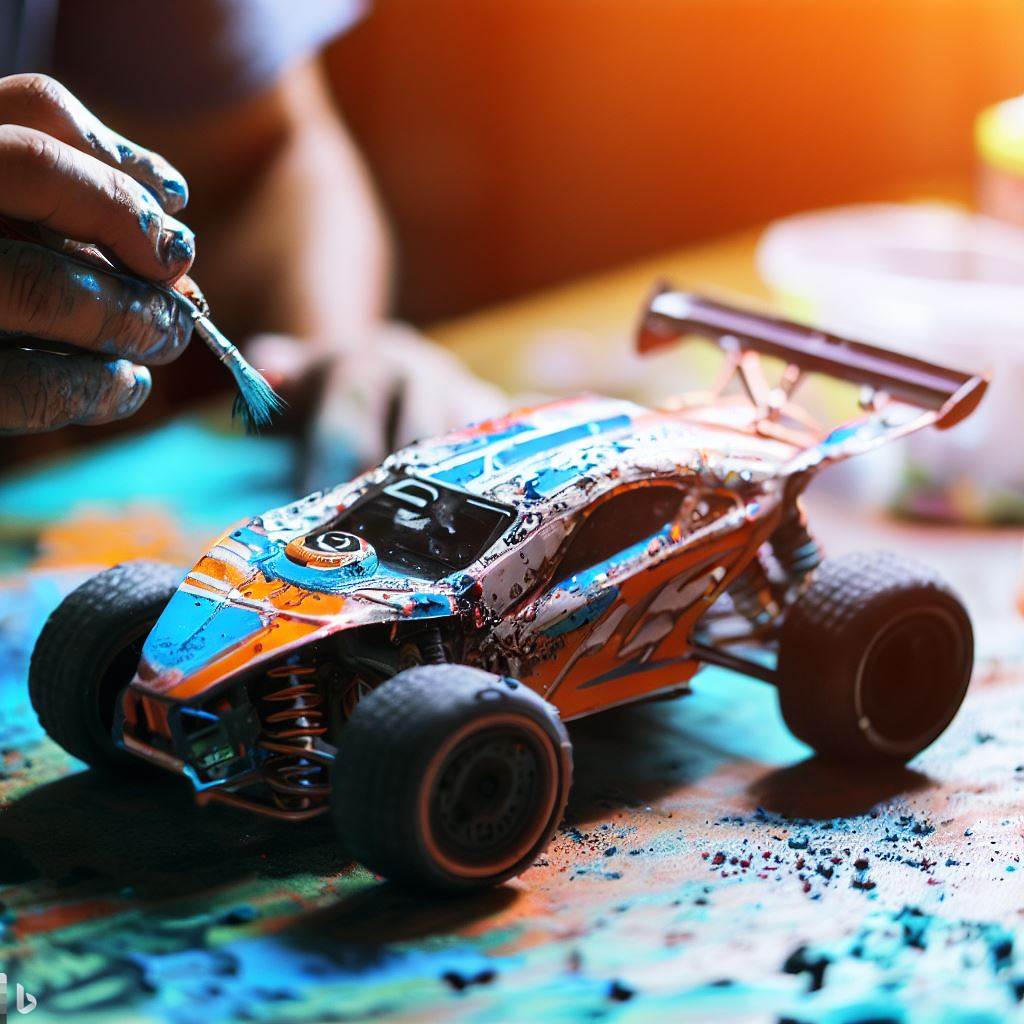Here Is How I Paint My RC Car Body: A Step-by-Step Guide for Newbies
I love painting and modifying my RC car, and painting my RC Car body can be fun and rewarding. Not only does it give your car a unique look, but it also allows you to show off your creative side. In this guide, I will take you through the steps involved in painting your RC car body.
The List I Use to Paint my RC Car (More details after)
- Prepare the RC car body
- Prime the RC car
- Paint on the base color
- Apply decals and details
- Apply clear coat
- Dry and Cure
- Finishing touches
Preparation Before Painting Your RC Car
Before I start painting, I make sure to prepare the RC car body properly. I begin by cleaning the body thoroughly to remove any dirt, dust, or debris that could affect the paint job. Then, I mask off any areas that do not need painting, such as the windows, trims, and mirrors.
Next, I choose the right type of paint for your project.
Priming the RC Car Body
Priming is a crucial step in painting your RC car body. It helps the paint adhere to the body and prevents the color from bleeding through. To apply primer, I begin by sanding the body with a fine-grit sandpaper. Then, using a spray can or airbrush, I apply the primer to the body in thin, even coats. I then let the primer dry completely before moving on to the next step.
Applying the Base Coat to the RC Car
Choosing the right base coat color is essential for achieving the desired look. Once I have selected the correct color, I apply it to the body in thin, even coats.
Remember to allow each coat to dry before applying the next.
Be sure to follow the paint manufacturer’s instructions. Avoid spraying too close to the body to prevent runs or drips.
Painting Details and Graphics on your RC Car
Once I have applied the base coat, I then begin adding details and graphics to the RC car body.
I like to use masking tape to create crisp lines. By using stencils you can create some wonderful graphics.
You can also use a variety of colors to achieve a more complex design.
Avoid removing the masking tape too soon, as this can cause the paint to bleed.
Applying the Clear Coat to Your RC Car Body
A clear coat helps protect the paint job and gives it a glossy finish.
I apply the clear coat and begin by lightly sanding the body with a fine-grit sandpaper. This creates a smooth surface for the paint to adhere to.
I then apply the clear coat in thin, even coats, following the manufacturer’s instructions. Make sure to allow each coat to dry completely before applying the next.
Removing the Masking Tape
Once the clear coat has dried, it’s time to remove the masking tape. I carefully peel off the tape, taking care not to damage the paint job. If any residue remains, I use a mild solvent to remove it.


Drying and Curing
Once I have finished painting, I leave the RC car body alone to allow the paint to dry and cure properly. This step is critical to achieving a professional-looking finish. Drying times will depend on the type of paint you’ve used. Also take into account the temperature and humidity levels.
Follow the manufacturer’s instructions to avoid disappointment.
In general, this will involve allowing the paint to cure at room temperature for a set time.
Finishing Touches After Painting Your RC Car
Once the paint job has dried and cured, I move on to the finishing touches. This is the stage where I can make the RC car body stand out.
Here are some ideas for finishing touches:
-
Polishing the car body: To get a glossy finish, you can use a polishing compound to buff the paint to a high shine.
-
Applying decals or stickers: Decals and stickers can add a personal touch to your RC car body. You can buy pre-made decals or make your own using a vinyl cutter.
-
Adding other finishing touches: There are many other ways you can customize your RC car body. You can add chrome trim, paint the wheels, or even add LED lights.
Troubleshooting Common Painting Issues
Even the most experienced painters encounter problems from time to time. Here are some common painting issues I have run into and how to get around them.
Orange peel: Orange peel is a texture that can appear in the paint job, making it look like the surface of an orange. This is typically caused by incorrect spraying technique or incorrect paint viscosity. To fix this, you’ll need to sand the affected area smooth and then reapply the paint.
Fish eyes: Fish eyes are small, circular craters that can appear in the paint job. This is caused by contamination on the surface of the car body. To fix this, you’ll need to sand the affected area smooth. Then clean the surface thoroughly before reapplying the paint.
Final say,
Painting my RC car body is a fun and rewarding activity that allows me to add a personal touch to my car. I hope that I have given you some inspiration to have a go at painting your own RC car.
Remember, preparation is key. Take the time to clean and prepare your RC car body, and be patient throughout the painting process.
Always maintain your car and clean it after every use. By doing this you will ensure your RC car will look good for longer!
Additional Resources
There are many resources available to help you learn more about painting RC car bodies. Here are a few recommendations:
- RC Car Action magazine: This magazine features articles and tutorials on all aspects of RC car building and maintenance, including painting.
- YouTube: There are countless YouTube channels dedicated to RC cars and painting. Search for “RC car painting” or “RC car body customization” to find videos that will help you improve your painting skills.
- Hobby forums: There are many online forums where hobbyists gather to share tips and advice.
I am a massive fan of anything that is remote controlled. This stems from my childhood when my Grandfather would take me to a local RC flying club and I would dream about having my own RC models someday.

